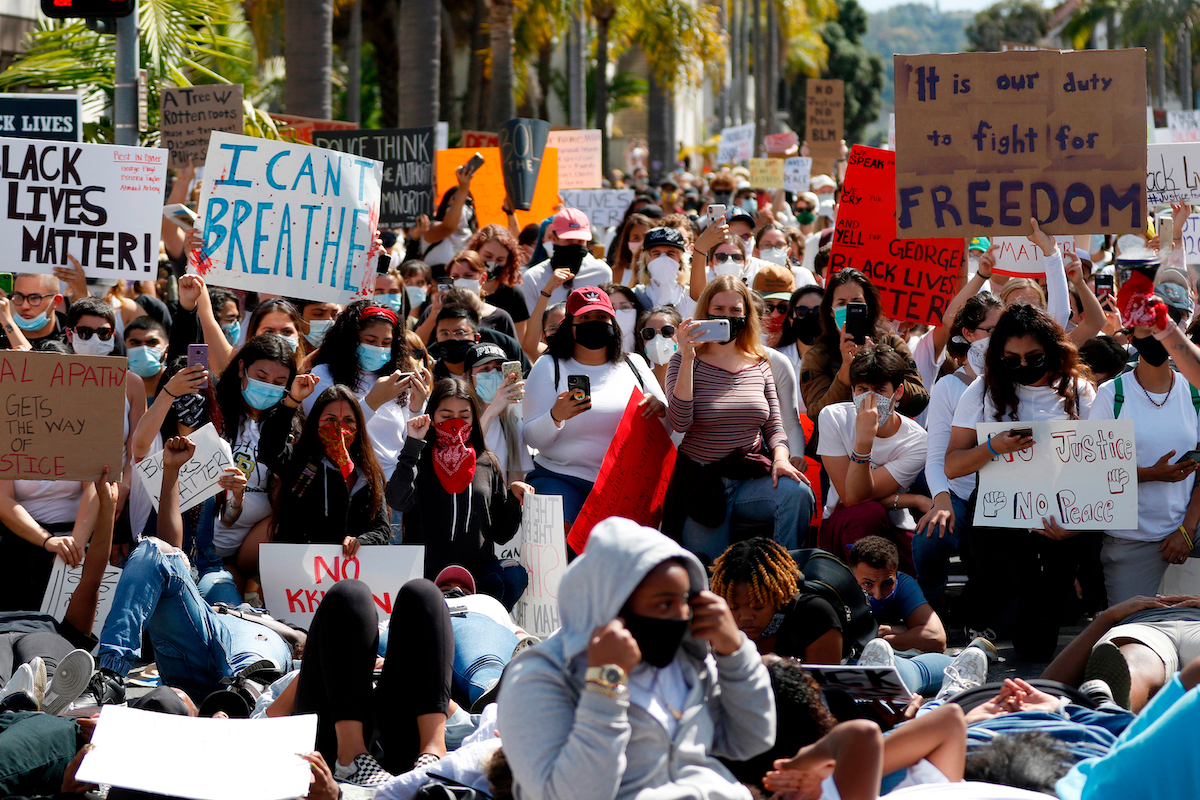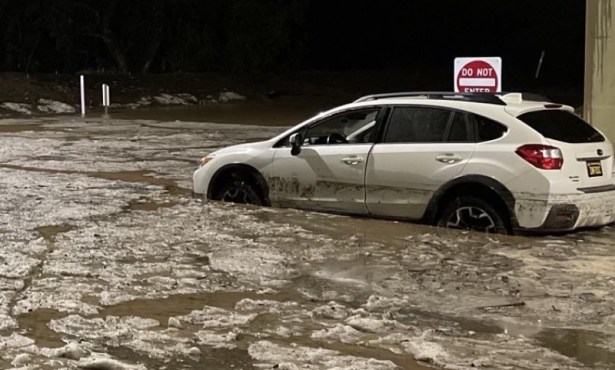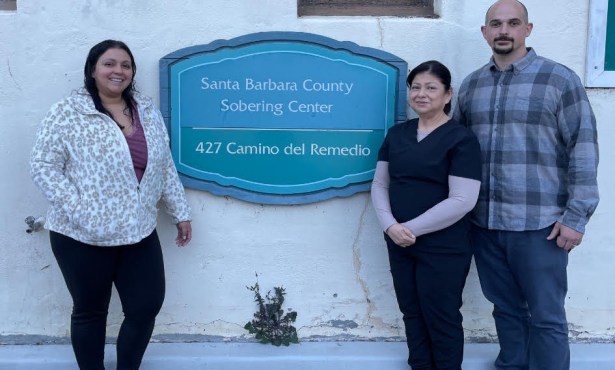One Year Later, Still Seeking Healing Justice
Some 2020 Demands Have Been Answered

From day one, the members of Healing Justice knew it wouldn’t be easy. A year after they made demands to the City of Santa Barbara, they’re still fighting, and they know there’s still a long road ahead.
“[The city has] created barriers — mostly in private, but recently in public,” said Healing Justice lead organizer Mariah Jones-Bisquera. “I mean, it’s not that they want us to succeed; that’s not their goal. But they can’t say that to the public.”
Despite the fight they’ve had to put up, there have been some major wins along the way. Among the accomplishments are obtaining ongoing Juneteenth funding, collaborating with the city to create a commission to build a civilian police oversight board, the Historic Landmark Commission recognizing two historic Black churches, and more.
But there’s a massive misperception as to how we got here. If you ask the mayor, the change has come without much resistance from City Hall. But members of Healing Justice do not consider Cathy Murillo an ally.
Even now, the city and the mayor are miles apart from Healing Justice over funding for the African-American Black Cultural Resource Center. In a debate that has recently escalated, members of Healing Justice have accused the city of shaming them publicly and privately under a veil of anti-Blackness. A signal that the fight for progress is far from over.
Healing Justice gave a presentation to the City Council about their work in the community over the past year, including offering free therapy for Black people, offering emergency grants for Black residents, holding Chocolate Baby Story Time to read Black-centered stories to youth, opening an art gallery exhibition featuring Black artists, and more. At the end, they asked for $500,000 to fund rent for a cultural resource center for three years — an amount that Healing Justice members say they were led to believe was acceptable by councilmembers.
But the council denied Healing Justice’s request.
“We really don’t have $500,000 to give,” Mayor Cathy Murillo said about the request. “No matter what, we really just don’t have it.”
Instead, councilmembers Oscar Gutierrez and Kristen Sneddon will work with both Healing Justice and the county to find funding and a location for the center.
“I mean, we saw that they approved over $90,000 to Fiestas, a celebration of colonialism and genocide against people in our community, against Indigenous folks. We saw that they approved youth programming through the police department,” said Simone Akila Ruskamp, one of Healing Justice’s cofounders. “All of these different things that they were able to do, and they approved all of those things without question.”
DEMANDS
Healing Justice issued its demands in the wake of George Floyd’s murder. Nearly 3,000 people marched in the streets in a protest led by Healing Justice cofounders. Two of the demands called for transparency and accountability from the Santa Barbara Police Department and the county Sheriff’s Office.
A major push in that direction is the Community Formation Commission, established by the City Council, to explore different civilian police review systems and ultimately give the City Council a final recommendation in March 2022 of what oversight body model to choose.
“Thanks to Healing Justice, the City Council was really intentional about making sure that [the commission] was as diverse as possible, including age, life experience, work experience, abilities,” said Gabe Escobedo, chair of the commission. “It is by far the most diverse commission or board in the city. And it shows in our meetings and in what people are bringing to the table and what sort of topics are getting brought up.”
And although the members of Healing Justice are grateful for a step in the right direction, they made it clear that this is only the beginning of transparency from the Santa Barbara Police Department.
“What I need the community to know is that we don’t have to have a Formation Commission,” Ruskamp said. “The City Council could have moved to just say, ‘We will have oversight, and we will have it now.’ Instead, what City Council moved to do was have a Formation Commission to say, ‘We will talk about it, think about it, and then once the formation commission gives us a recommendation, we’ll consider if we will accept.’”

Escobedo said the commission is looking at Santa Barbara–specific data and needs as well as what sort of oversight bodies have been developed in other communities. The ultimate goal, he said, is for the community to have a place to go outside of the police department. He gave examples of the types of people who may not feel comfortable going to the police, like undocumented people or someone making a complaint about a police officer. Building an outside entity would build community trust.
The Sheriff’s Office declined to build any type of civilian oversight board.
Healing Justice also demanded the preservation of Black landmarks, “rather than monuments to white supremacy.” The Historic Landmarks Commission devoted St. Paul African Methodist Episcopal Church as a city landmark and Second Baptist Church a structure of merit — both wins for Healing Justice.
A landmark is the highest designation in the city. St. Paul was the first African-American church in Santa Barbara.
“[St. Paul] was built in 1916 in the carpenter Gothic style,” said the city’s Urban Historian Nicole Hernandez, who worked with Healing Justice to designate the churches. “African-American and Black churches were just really critical for the Black community as a real sense of their own place. So it’s really one of the most important institutions in the African-American culture.”
Hernandez said that she and members of Healing Justice are now working on a historical context statement. Some of the buildings Healing Justice pointed out as containing Black history don’t fit the traditional, historic criteria to be designated, like the Lincoln School, which has since been torn down and can’t be designated.
Hernandez said they have applied for a grant to craft the historical context statement — which is a written comprehensive history of the community as a whole. At the end, they will identify the buildings that can be designated to represent that history.
One of the more immediate demands that were met was for ongoing institutional support for Juneteenth. The city designated $35,000 to Juneteenth annually. The money goes directly to Juneteenth S.B., a separate group from Healing Justice, though several of the members overlap.
Jones-Bisquera was proud of the many events Healing Justice and Juneteenth S.B. are putting on for Juneteenth, but she was particularly proud of their art gallery called Melanin at 833 State Street.
“As far as what we have done with the money for Juneteenth, despite all these barriers these white folks keep putting up for us, we have been able to create pure magic, Black excellence,” Jones-Bisquera said. “Melanin Gallery is black-fem led, featuring only Black artists from Santa Barbara. And just yesterday, we had 88 people visit the gallery.”
Besides the gallery, she said they are putting on virtual programming Friday as well as Saturday that will include a Juneteenth panel discussion and Chocolate Baby Story Time. They also will be hosting the first Black artisan market and several live band performances.
Support the Santa Barbara Independent through a long-term or a single contribution.




You must be logged in to post a comment.